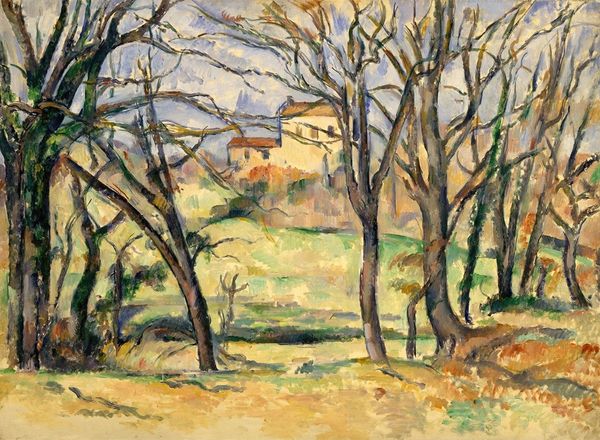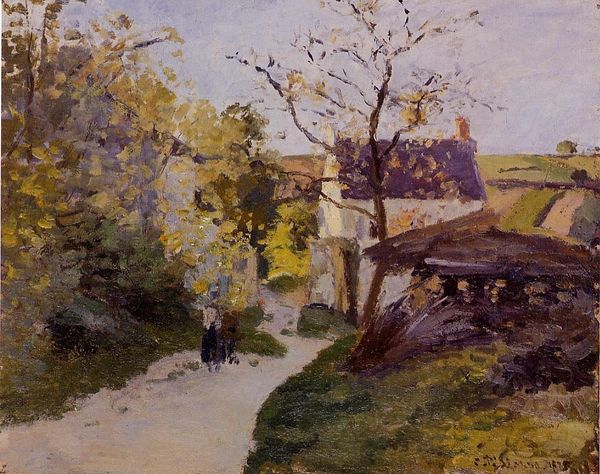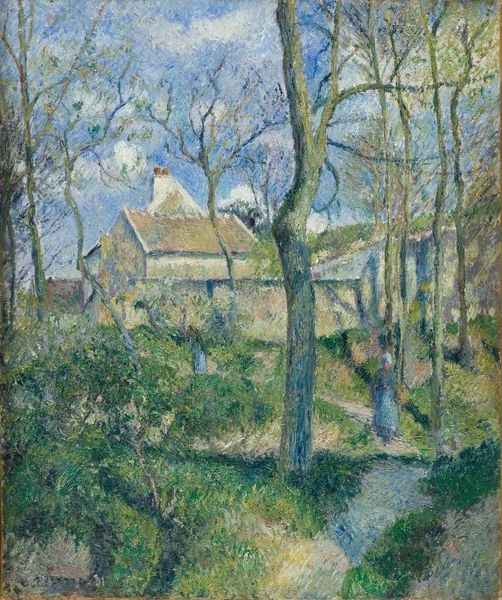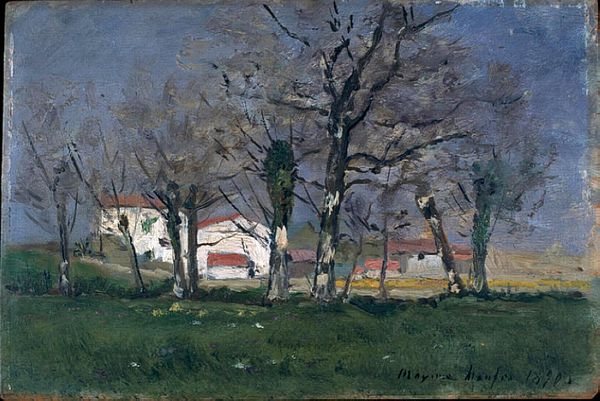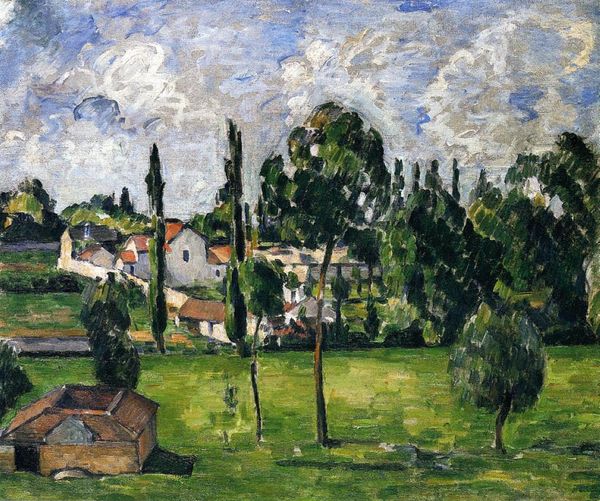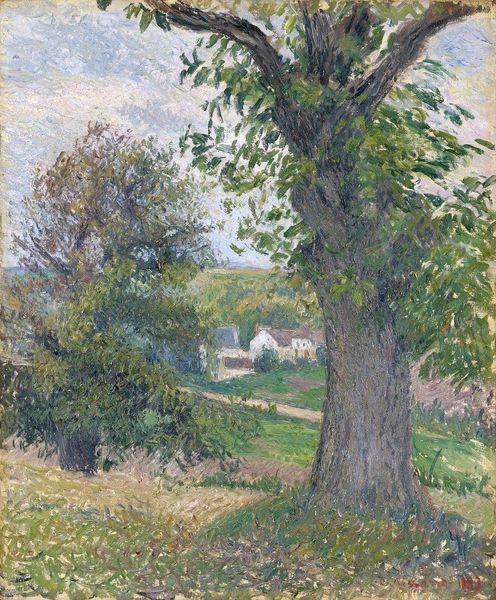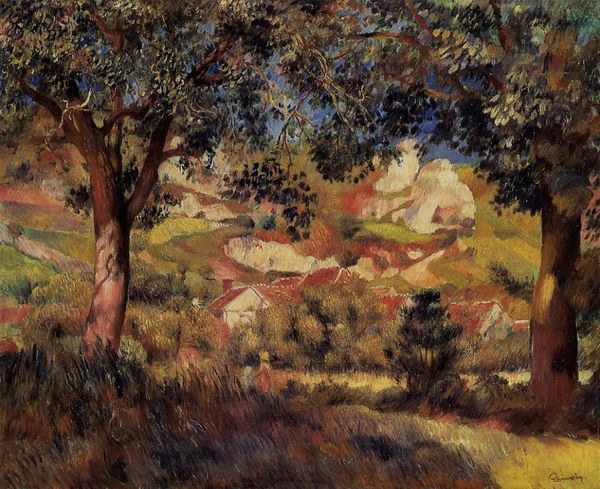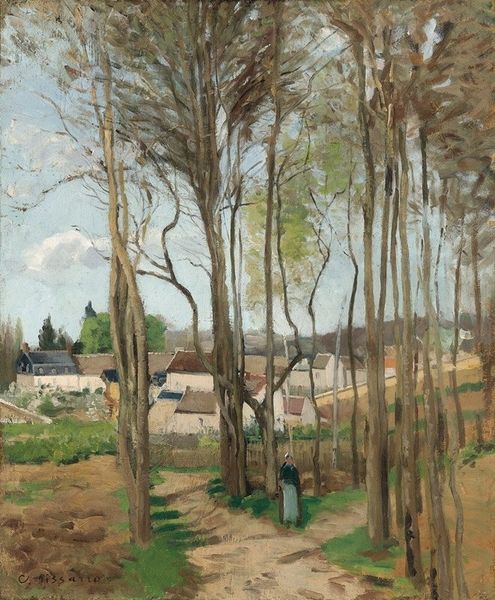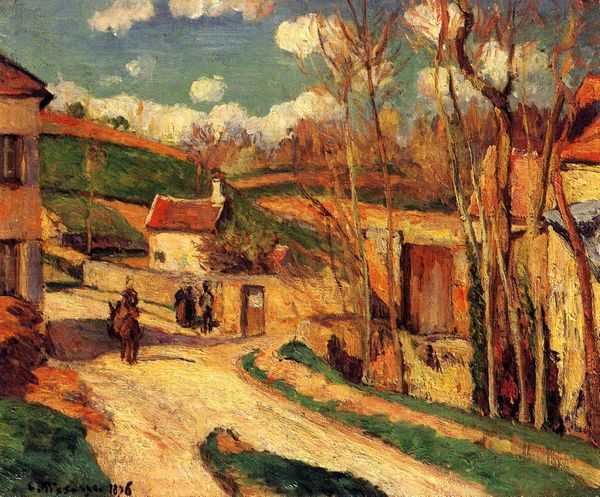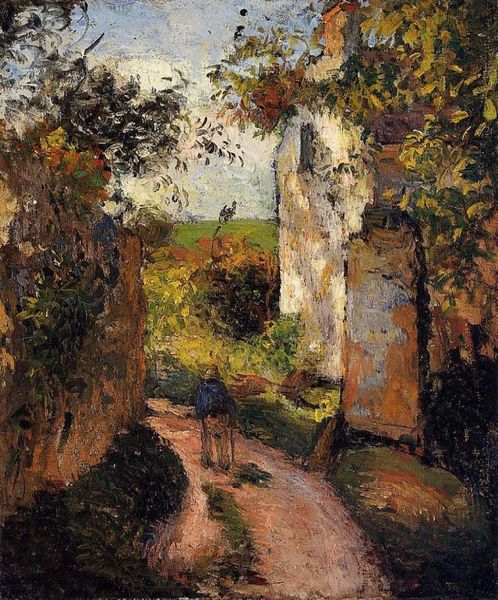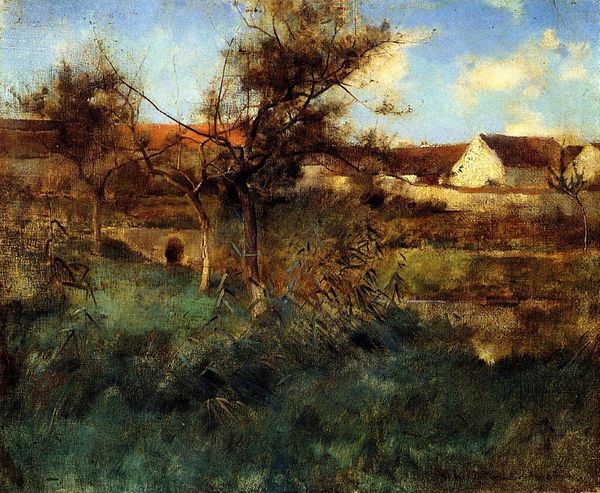
Copyright: Public domain
Curator: Let's turn our attention to Paul Cézanne's "Cottages of Auvers," painted in 1873. An intriguing piece from his early period. Editor: Immediately striking is the density, the compression of space. The trees lean in, framing the cottages almost aggressively. It feels like a protective gesture, but also claustrophobic. Curator: Indeed. Notice how Cézanne employs short, hatched brushstrokes. The materiality of the oil paint itself is quite pronounced. The application lacks the blending typical of the period, forcing a fragmented perspective. Editor: The cottages, then, represent more than simple dwellings; their earthy tones and somewhat humble construction become symbols of refuge, perhaps even rootedness. Is this landscape perhaps a statement on simplicity and a rejection of urban anxieties? Curator: Possibly, although such interpretations should be approached cautiously. What the painting declares formally is just as important. Consider the path – a serpentine form that leads the eye directly into the core of the composition, creating dynamism while remaining fixed due to the overall density of forms. Editor: That path also feels significant symbolically. It suggests journey, transition, and even perhaps a pilgrimage to something more fundamental than modern life might offer. The way it disappears from view implies that the answer may lie beyond the visible. Curator: A fitting observation. And do notice how the muted palette of ochres, greens, and grays adds a particular somber gravity to the scene. Editor: Absolutely. It strips away superficial beauty and confronts us with a kind of essential rawness, both in the landscape and perhaps in ourselves. It is more than just a village, it embodies human interaction with land over time. Curator: Yes. We see this same rawness in Cézanne’s later works when he truly flattens space. His work, in this early iteration already, lays a path towards abstraction. Editor: Thinking of art as pilgrimage today offers so much; hopefully viewers, even now, find some part of themselves represented. Curator: Indeed. Thank you for illuminating the more hidden meanings and expanding the ways in which a viewer might relate to this landscape.
Comments
No comments
Be the first to comment and join the conversation on the ultimate creative platform.

